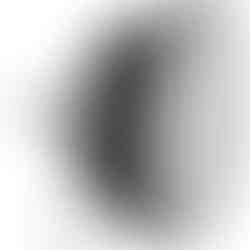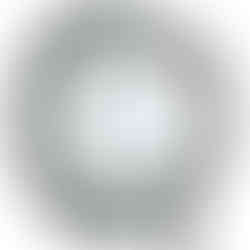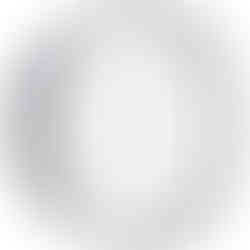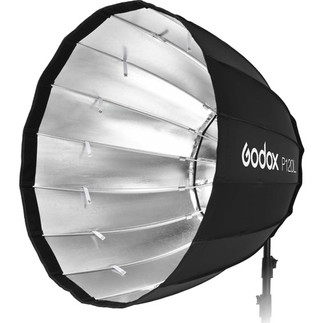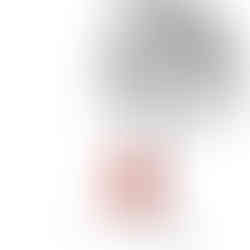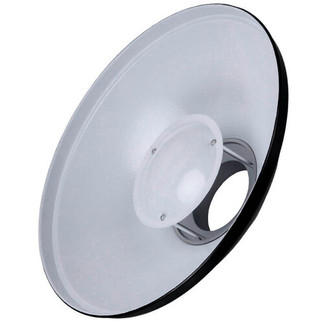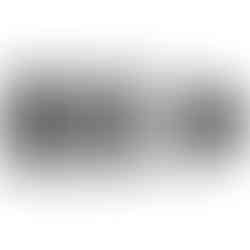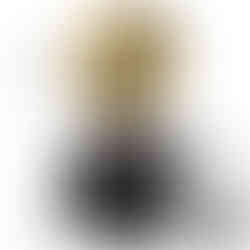Most essential Light Modifiers for your Photography in Studio or Outdoors
When we buy any studio light, it comes with a basic reflector around the light source which is the tube that produces a burst of white light. Light modifiers are such tools used in photography studios to shape, soften, or otherwise manipulate the quality of light. Over the past several years like many other Photographers, I have been using the following light modifiers on an everyday routine basis.
Softbox to Diffuse or make the light source larger
A softbox is a type of light modifier that is used to create soft, diffused light. It consists of a box-shaped frame with a removable front panel that is covered with a neutral diffusing material, such as white fabric or translucent plastic material. These are specifically created for this purpose so that light gets diffused but not get blocked that much. Softboxes are commonly used in Beauty and portrait photography to create flattering, even light but their usage is very common in every other genre of Photography as well.
Size is what matters
As we know the larger the light source is, the softer the light is. "Largeness" is in reference to the size of the subject. The size of the softbox to create soft light will depend on how large it is and how much away the front diffuser is from the light source. It is based on the principle of the Sun and the clouds. Sun is farther away from us and clouds are very close. Since the sun is farther away, it appears small and the light reaching us from the sun is in straight lines and hence hard. When filtered through the cloud which appears large because it is closer to us, the light reaches us from multiple directions within the large cloud and hence gets soft and diffused.
The same concept of the Sun and the Cloud is adapted in the case of a Softbox. Opt for a large soft box if you wish the light to be soft and uniform across your subject.

Since the soft box is quite large it is able to cover the couple completely without having to add another light.

The lighting created with the help of SoftBoxes is quite uniform across the subject for this Beauty shot.

A strip-shaped rectangular softbox was used to short-light the model. Strip allows the illumination to be soft and diffused yet restricted to a limited narrow area. If you notice, the right of the model is more illuminated and highlighted as compared to the other side. Side lighting helps in revealing the fine texture of the sweater she is wearing without increasing the contrast too much.
Softboxes are available in Different sizes and shapes. From a very small size which can be fitted on a camera Flash to a large size which is used to illuminate cars and other Automobiles. deeper and larger the softbox is better is the Diffusion. Many come with additional internal Diffusers as well.
Deep parabolic softboxes are quite commonly used in Fashion and Glamour Photography industry.
Lalterns allow for a soft diffused omnidirectional light particularly useful in the illumination of Interiors. These are very commonly used for Interior and Architectural Photography.
Umbrellas for quick setup.
An umbrella is a type of light modifier that is used to create soft, diffused light or bounced light depending upon the material being used. Its shape and operation are just like a conventional umbrella for the rain. Curved in nature, it may use a reflective surface ( Silver, Golden or white on its inner surface) or this curved surface could be made of diffusing material. Being versatile these can be used for a variety of lighting setups very quickly as you just need to open and fix them in the slot of the Light.
Compared to Softboxes, these do not come in very large sizes and that makes them less practical and portable. Most of them are open from the other end just like a conventional umbrella but some do come with an attachment to cover so that the light does not escape, However, there is an advantage, that the escaped light eventually bounces off from the surroundings in the room you are shooting in and acts as a further fill in.

Umbrellas are available in different fabrics. Essentially, Translucent, Neutral white, Silver and Gold. The light in the one with the translucent material is pointed toward the subject. In other umbrellas these being reflexive in nature the light is pointed in the direction opposite to the subject.
Beauty Dish
A beauty dish is a type of photographic lighting modifier that is used in portrait photography and fashion photography to create a soft and even light. It is a circular dish-shaped reflector with a central light source and a white interior. The light is directed towards the reflector, which diffuses and softens the light, creating a flattering and even light on the subject's face.
Beauty dishes are popular in portrait and beauty photography because they produce a soft and even light that can help to reduce harsh shadows and create a natural-looking image. They are often used in conjunction with other lighting modifiers, such as reflectors or diffusers, to further soften the light or create additional effects.
Beauty dishes come in a range of sizes, typically ranging from around 16 inches to 30 inches in diameter, and can be used with a variety of lighting equipment, such as strobes or speedlights. They are versatile lighting modifiers and can be used for a variety of lighting setups, from headshots to full-body portraits.



A beauty Dish with a deflector inside, without a Diffuser, works as a good combination of Hard yet soft light, which is very good to reveal fine detail in Lingerie Photography.



Grids or Snoots for better control and to emphasize
A grid is a type of light modifier that is used to control the direction and spread of light. It consists of usually a Honeycombed grid of metal that attaches to the front of a light source and helps to control the direction of the light. Based on the size of this grid, it will create a smaller or larger pool of light. Essentially it bocks the light going sideways and allows only the light rays which are going straight to reach the subject.
Honeycomb grids are primarily for hard light sources but there are some grids that can be attached in front of a Softbox to make the diffused light coming out more directional and avoid spills.

Grids with Barn Doors



Grids create a pool of light without specific hard edges. This helps highlight certain areas more than the surroundings. The objective here was to illuminate the model, Vijaya and allow less or no light to fall on the candles which are themselves visible due to their own light. Barn doors can be attached to the grid for further control of light by blocking the light going outwards.
Snoot

A snoot is a type of light modifier that is used to focus the light into a narrow beam. It consists of a long, narrow conical tube that attaches to the front of a light source and helps to control the direction and spread of light. In the photograph above, the cone was created with a black sheet and the outer edges were torn so that specific uniform round edges are not created but the illumination remains uneven and more interesting.

For this Photograph, the Mini spot was used, which is a kind of snoot with a lens to focus the light fitted inside. This gives a more of a Spotlight kind of effect and the round edges are quite sharp.
Reflectors
As the name suggests, it is not something which is attached to the light itself to modify it but it reflects the light created by the light source, with or without a modifier. Being made of a reflective material it is used to bounce back the light back on the subject so that the difference between the brighter illuminated side of the subject and the darker side is reduced.
It may also be used to redirect and bounce the light towards areas where the light source is unable to directly illuminate. We can more around the artificial light source but when sunlight is the prime light source, we may use a reflector to bounce and redirect the sunlight towards an area in shade where this "Sunlight Illumination" would not have reached otherwise.

In areas, like this Alley, Light can be redirected to the area where it is required for your photograph. Alleys like this work as a tunnel where during certain times of the day, direct sunlight may not be there but the surrounding buildings keep reflecting the light depending on the direction of the light.


Reflectors can be used outdoors along with Artificial light as well. While the reflector redirects the warm natural light of the sun, A Beauty dish with a Diffuser is supplementing the light.

Phase One P30+ | Mamiya 645AFD II | Mamiya 55mm | 1/80 at f 6.3
Diffusers
Diffusers are made up of translucent neutral material which help diffuse a point source. These are placed in front of the light but closer to the subject and farther from the Light source. Since light travels in straight lines and spreads, the diffuser, being close to the subject acts as a large light source instead of the original point source. The light falling on the subject due to the large size of the diffuser, becomes soft and diffused.


Here the diffuser is softening the harsh sunlight falling on one side of the face. I the photograph you still see the contouring created by the side lighting but the contrast has been reduced. Because of the Diffuser, the difference between the brighter and the darker sides of the face is less as compared to how it would have been without a diffuser.

The idea of adding a reflector here was to ensure that there are no bright patches created by the sunlight. Sunlight is falling on the hair and creates a nice highlight. When shooting against the light, I prefer to be exactly opposite to the sunlight but sometimes the situation does not allow this. The position of the model was such that there was some harsh light spilling on her body as well. The diffuser helped block it and allow only soft diffused light to pass through.

Phase One P 30+ on Mamiya AFD II

It does not have to be this or that but one can use a combination of different Light modifiers to create the desired effect on the Model or any other subject. There is a Bare light to act as Backlighting to emphasize the smoke (Backlighting illuminates and highlights the smoke effect)
There is strip light to create Short lighting on the face and the body as it creates a more slimming effect.
There is a large SoftBox to fill the light on the side of the face/body towards the camera.

Whether it is a simple collapsible Rfelector, Beauty Dish or a Softbox, they all come in different internal fabrics particularly, White, Silver and Gold. These influence the color temperature as well as the reflective quality of the light as it gets reflected from these before reaching the illuminated Subject.
These are only some of the most essential Light modifiers. there are many more options that you can always invest in as you graduate further in Photography and get a better understanding of the genre you are pursuing.




